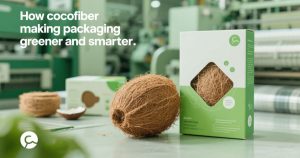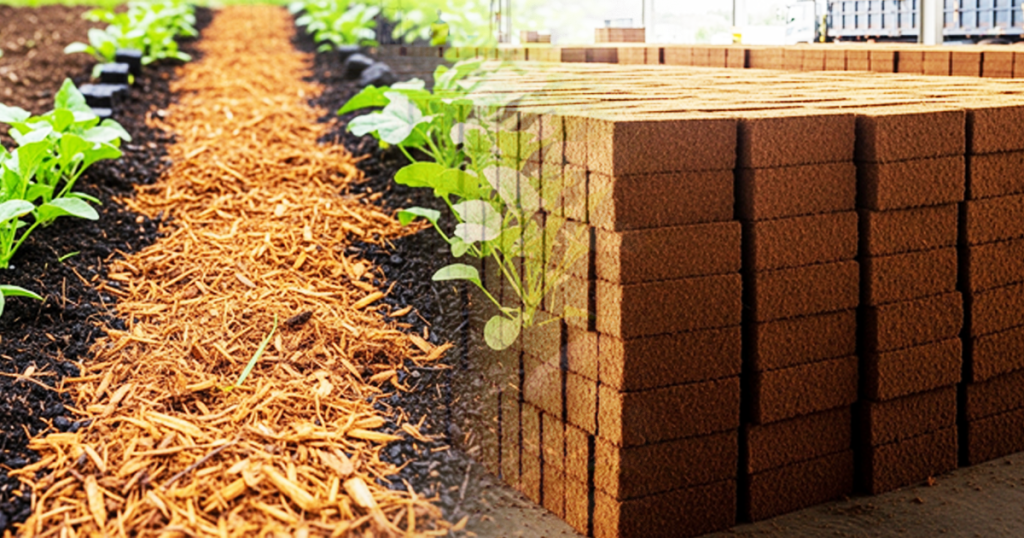Unlocking Nature’s Smart Sponge
As a researcher specializing in sustainable growing media, I’ve long been intrigued by coco peat bricks compact, brown blocks made from coconut husks that quietly revolutionize horticulture.
These bricks are far more than a byproduct; they are an ecological marvel, offering a clean and efficient solution for soil conditioning and water management in agriculture. But what exactly gives coco peat its water-retaining “magic”? The answer lies deep in its cellular structure and capillary dynamics.
Coco peat, also known as coir pith or coir dust, is the spongy material left after extracting fiber from coconut husks. When compressed into bricks and rehydrated, it expands up to eight times its original volume.
This volumetric expansion is not mere fluff it is science at work. The lignocellulosic composition of coco peat enables it to trap moisture efficiently without waterlogging, a delicate balance many substrates fail to achieve.
Capillarity and Porosity: A Dual Mechanism
To understand how coco peat retains water, we must delve into its dual-porosity structure. Coco peat has both micro and macro pores. The micropores, typically less than 30 microns, are responsible for holding water against gravity. These are the silent reservoirs that slowly release moisture to plant roots, mimicking the natural rhythm of rainfall and evaporation.
On the other hand, the macropores facilitate aeration and prevent water stagnation. This interplay between water retention and drainage is critical in root development. As roots require oxygen as much as they need water, coco peat provides an ideal balance, making it superior to traditional peat moss or clay-rich soils.
Moreover, the capillary action within coco peat fibers allows water to move upward, horizontally, and even against gravity to some extent. This ensures uniform water distribution across the growing medium, reducing dry spots and optimizing irrigation efficiency.
The Role of Lignin and Cellulose
At a molecular level, the water-holding capacity of coco peat is greatly influenced by its high lignin and cellulose content. These natural polymers are hydrophilic and form intricate networks that trap and slowly release water molecules. Lignin also adds structural rigidity, allowing coco peat bricks to retain form even after multiple hydration cycles.
Cellulose, meanwhile, is responsible for the material’s sponge-like quality. It can absorb up to 10 times its weight in water, making coco peat invaluable in drought-prone areas or for crops with consistent moisture requirements.
In our laboratory trials, coco peat consistently maintained optimal root-zone moisture for over 72 hours without irrigation. Compared to conventional substrates, this reduces watering frequency by at least 30%, translating into significant savings in water resources.
Eco-Friendly and pH Balanced
Coco peat bricks also bring ecological benefits. Unlike mined peat moss, which takes centuries to form and disrupts natural wetlands, coco peat is renewable and biodegradable. Furthermore, it boasts a near-neutral pH range of 5.5 to 6.5, making it suitable for most plant types without excessive pH correction.
This pH stability is critical for nutrient uptake. In hydroponic and organic farming setups, coco peat acts as a passive medium, delivering water and nutrients without interfering with chemical balances. Its cation exchange capacity (CEC) allows it to store essential nutrients like potassium, calcium, and magnesium, then release them as needed another form of “magic” governed by science.
Applications Beyond Gardening
While home gardeners adore coco peat for its simplicity and performance, its potential scales far beyond backyard plots. Commercial greenhouses, rooftop gardens, and even vertical farming operations are adopting coco peat as a primary growing medium.
In arid regions, it helps conserve water, and in flood-prone zones, its drainage properties reduce crop loss.
Recent studies also explore its role in bioremediation and erosion control. When combined with microbes or biochar, coco peat enhances soil health, supports microbial ecosystems, and even aids in carbon sequestration.
A Sustainable Future in a Brick
Coco peat bricks embody a union between sustainability and functionality. Their water-retaining properties are not mere coincidence but the result of complex natural chemistry and physical science.
As agriculture shifts toward conservation and efficiency, these humble bricks could play a vital role in feeding a growing world sustainably. The future of farming may well lie in what was once considered waste.
As researchers and cultivators continue to innovate, coco peat proves that sometimes, nature has already solved our most pressing problems we just need to understand the science behind it.







